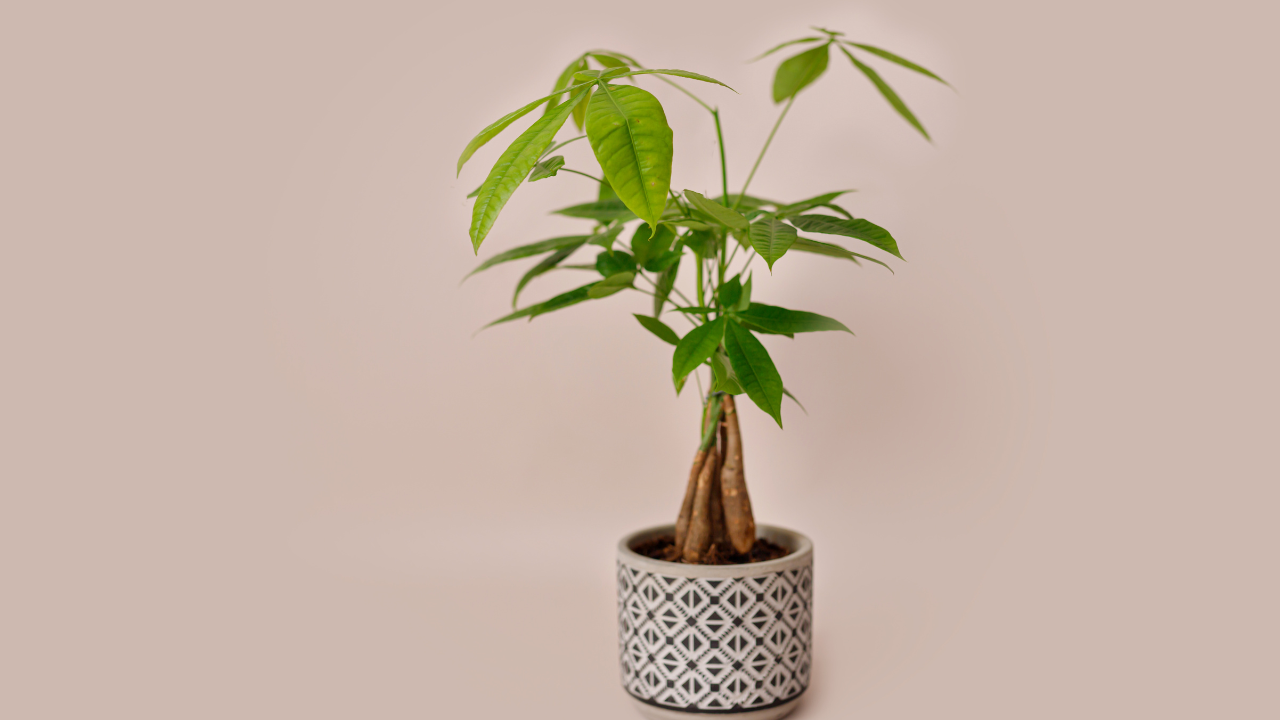The Money Tree plant, known scientifically as Pachira aquatica, is a popular indoor plant admired for its attractive braided trunk and lush, green foliage. Native to Central and South America, this plant is believed to bring good luck and prosperity, making it a favorite in homes and offices. While the Money Tree plant is relatively easy to care for, it does require some attention to thrive. Here are ten essential tips to help you keep your Money Tree healthy and vibrant.
1. Choosing the Right Location
The first step in caring for your Money Tree is selecting an ideal spot in your home. This plant thrives in bright, indirect light, making it perfect for rooms with plenty of natural light but not direct sunlight. Direct sunlight can scorch its leaves, causing them to brown and wilt.
Avoid placing your Money Tree in dark corners or rooms with poor lighting, as this can lead to leggy growth and weakened health. If natural light is limited, consider using a grow light to supplement its lighting needs.
2. Watering Schedule
Watering your Money Tree properly is crucial for its health. This plant prefers a consistent watering schedule, allowing the soil to dry out slightly between waterings. Overwatering can lead to root rot, while underwatering can cause the leaves to droop and yellow.
To ensure proper hydration, water your Money Tree when the top inch of soil feels dry to the touch. Water thoroughly, allowing excess water to drain out of the pot to prevent waterlogged soil. During the winter months, reduce the frequency of watering as the plant’s growth slows down.
3. Humidity Requirements
Money Tree plants thrive in humid environments, mimicking their native tropical habitats. Low humidity can cause the leaves to brown and crisp at the edges. To maintain the right humidity level, place a humidity tray or a shallow dish filled with water near the plant.
Additionally, misting the leaves regularly can help maintain adequate humidity. If your home is particularly dry, especially during winter, using a humidifier can provide consistent moisture in the air, benefiting your Money Tree and other indoor plants.
4. Soil and Potting
Choosing the right soil and pot is essential for your Money Tree’s health. A well-draining potting mix, such as a blend of peat moss, perlite, and sand, is ideal. This type of soil prevents water from sitting around the roots, reducing the risk of root rot.
When potting your Money Tree, select a pot with drainage holes to allow excess water to escape. Repotting should be done every two to three years or when the plant outgrows its current pot. During repotting, gently remove any old soil from the roots and refresh with new, nutrient-rich soil.
5. Fertilizing Needs
Money Tree plants benefit from regular fertilization during their growing season, typically from spring to early fall. A balanced, water-soluble fertilizer diluted to half strength can provide the necessary nutrients for healthy growth.
Fertilize your Money Tree every two to four weeks during the active growing period. Avoid fertilizing during the winter months when the plant’s growth slows down. Over-fertilizing can harm the plant, so it’s essential to follow the recommended dosage on the fertilizer package.
6. Pruning and Maintenance
Regular pruning helps maintain the shape and health of your Money Tree. Trim away any dead or yellowing leaves and any leggy or overgrown branches. Pruning not only keeps the plant looking neat but also encourages new growth.
Use clean, sharp pruning shears to make clean cuts, preventing damage to the plant. Additionally, dust the leaves regularly to keep them clean and free of pests. A gentle wipe with a damp cloth can remove dust and enhance the plant’s ability to photosynthesize effectively.
7. Dealing with Pests
Money Tree plants can occasionally attract pests such as spider mites, aphids, and mealybugs. Regularly inspect your plant for signs of infestation, such as discolored leaves, webbing, or sticky residue.
If pests are detected, isolate the plant and treat it with insecticidal soap or neem oil. Wiping the leaves with a mixture of water and mild dish soap can also help eliminate pests. Consistent care and maintaining a clean environment can prevent pest problems.
8. Temperature Preferences
The Money Tree plant prefers temperatures between 65-80°F (18-27°C). It is sensitive to extreme temperatures and drafts, which can cause stress and damage to the plant. Avoid placing your Money Tree near heating or cooling vents, radiators, or drafty windows.
In winter, keep the plant away from cold drafts and ensure the room temperature remains within the preferred range. Sudden temperature changes can cause leaf drop and negatively affect the plant’s health.
9. Propagation Techniques
Propagating your Money Tree can be a rewarding way to expand your plant collection. The most common method is through stem cuttings. Select a healthy stem with at least two nodes and cut it just below a node.
Allow the cutting to dry for a day, then place it in water or directly into moist potting soil. Keep the cutting in a warm, humid environment and provide indirect light. Roots should develop in a few weeks, and once established, you can transplant the new plant into its pot.
10. Signs of Stress and Troubleshooting
Understanding the signs of stress in your Money Tree can help you address issues promptly. Common signs include yellowing leaves, drooping, and leaf drop. Overwatering, underwatering, and poor lighting are often the culprits behind these symptoms.
Assess your plant’s care routine and make necessary adjustments. Ensure proper watering, lighting, and humidity levels, and check for pests. With attentive care, most issues can be resolved, allowing your Money Tree to thrive once again.
By following these ten care tips, you can ensure your Money Tree remains a healthy and beautiful addition to your home. With proper attention to its needs, this plant can bring joy and a touch of greenery to your living space for years to come.

